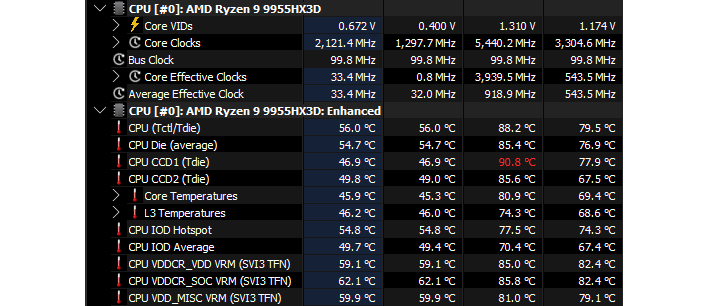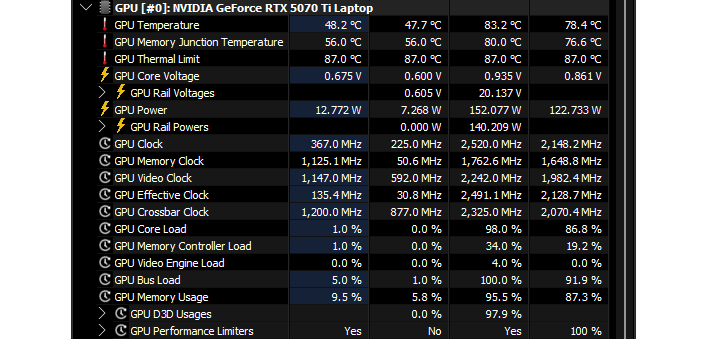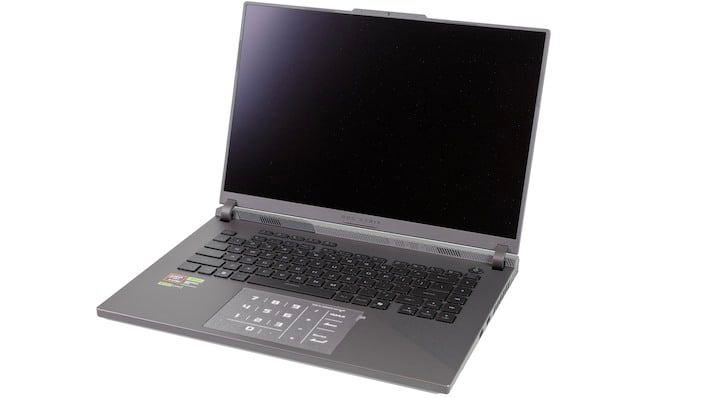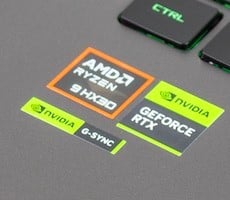ASUS ROG Strix G16 Review: Balanced Performance Meets Gaming Value
We used a looping Cyberpunk 2077 benchmark for our thermal and noise testing. That's because it produces a considerable amount of load on both CPU and GPU, and it is a fairly realistic gaming workload, unlike something such as a Prime95-and-Furmark torture test. Breaking news: if you run a power virus on a laptop CPU, it overheats. Shocking, right?
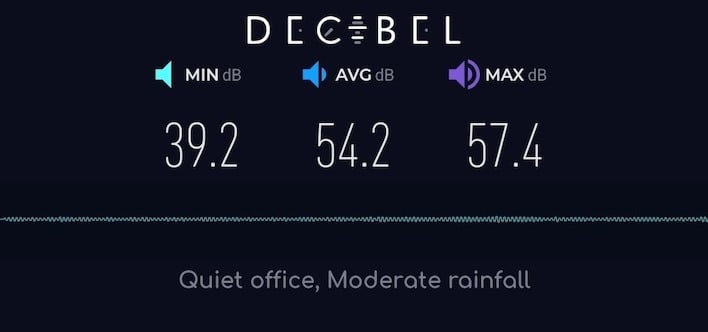
Under a more sensible and realistic workload, we see a reasonable amount of fan noise. There was some variability in the fan noise, as the fans ramped up and down to try and manage the inconsistent load from the game, but it wasn't super distracting. The average level of 54.2 decibels is decidedly audible, but not distressing, and the peak level of 57.4 decibels is only a bit louder. It's enough noise to require you to turn up your volume, but nothing that's going to bother people around you except perhaps in a classroom scenario. Don't play games on your gaming laptop in class, kids.
This machine's Ryzen 9 9955HX3D CPU does get pretty warm, but despite the scary red text in HWiNFO, this is still over nine degrees away from the thermal limit for the CPU. The chip isn't throttling; we're seeing peak clock rates of 5.44 GHz, which is actually fantastic under a multi-core workload like Cyberpunk 2077.
Looking at the GPU data, it's also quite impressive. Even with the GPU pulling a peak of 152 watts—exceeding its 140-watt rated maximum—it doesn't thermally throttle, instead topping out at 83.2℃. This is fairly close to the thermal limit of 87℃, but this is a 16" laptop, not a huge desktop replacement, and this was a taxing test, so we think it's just fine. We ran this benchmark for over 30 minutes to produce these numbers.
ASUS ROG Strix G16 (2025) Battery Life Benchmarks
Gaming laptops aren't typically known for their battery life. Once upon a time, the untethered lifespan of most gaming portables was easily measured in minutes, not hours. These days things aren't quite so dire, but there's still a huge gulf between the battery life of something like the Strix G16 and something like the ROG Flow Z13. Take a look: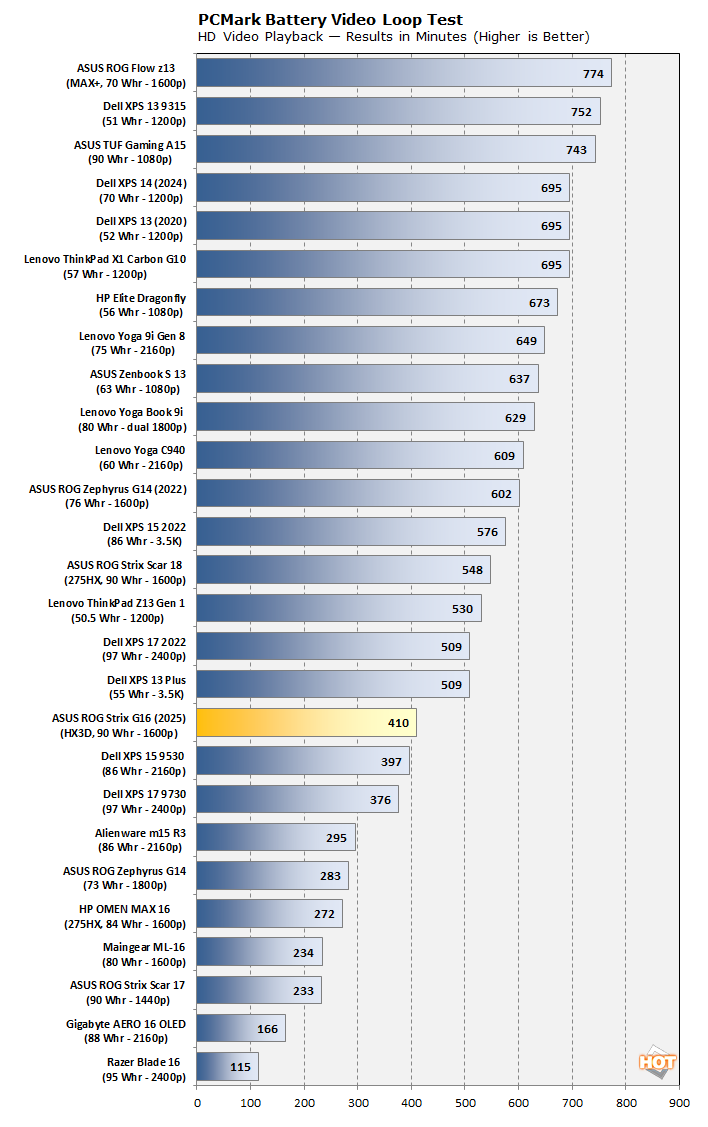
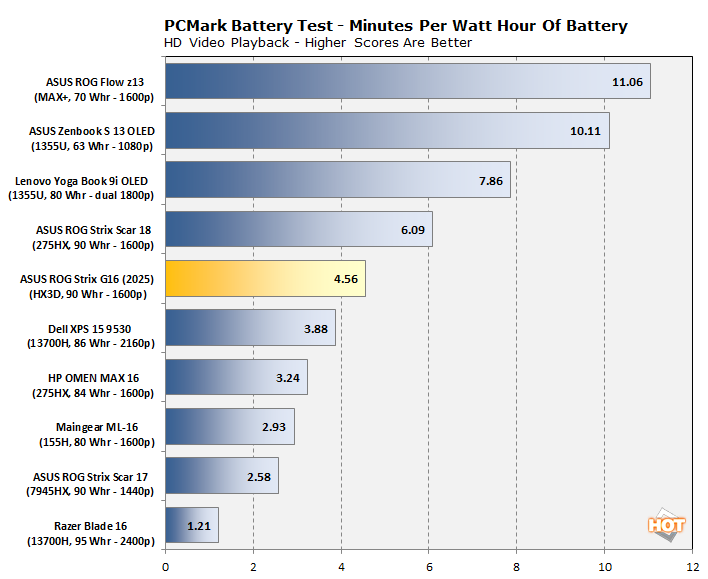
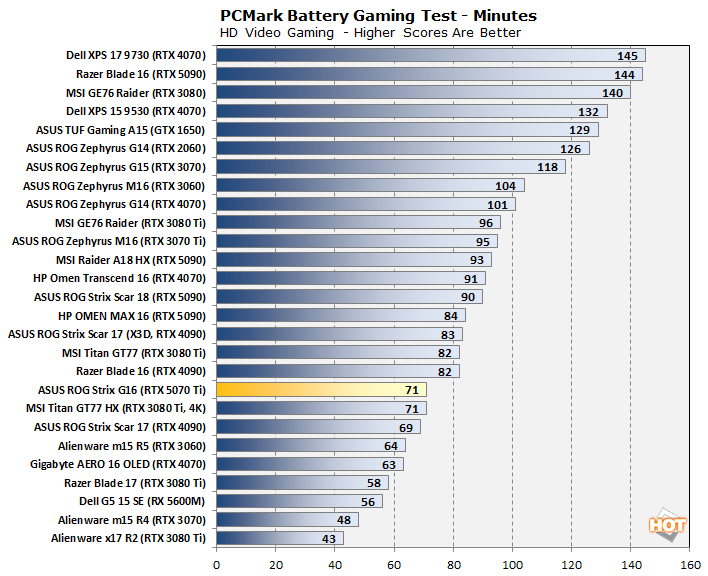
In the PCMark battery gaming test, the ROG Strix G16 performs markedly worse than systems with RTX 5090s. Why? Well, this benchmark uses the 3DMark Fire Strike test with a 30 FPS cap, and that light workload can allow GeForce RTX 5090 GPUs to clock down considerably, remaining within their optimal power curve. Meanwhile, the smaller GeForce RTX 5070 Ti has to work a bit harder, and as a result, the power draw is pretty similar.
As we noted in our HP Omen Max 16 review, this number would get a lot bigger if your game can be played on the AMD CPU's integrated graphics. You might sneer at the idea of gaming on a tiny little one-WGP GPU, but there are tons and tons of games that will play just fine, like Terraria, 20XX, or Balatro.
ASUS' ROG Strix G16 Is An Awesome PC Gaming Value
Frankly speaking, we sometimes feel a little silly reviewing systems like the ASUS ROG Strix Scar 18 or the HP Omen Max 16. These are fantastic laptops, but they're luxuries reserved for those who have the spare cash to enjoy them. The new ASUS ROG Strix G16 isn't cheap, but its $2,499 price point feels like something achievable for mere mortals.What do you lose in the step down from those larger flagships? Mostly, half the GPU's streaming multiprocessors. The jump down from the GeForce RTX 5090 Laptop to the GeForce RTX 5070 Ti Laptop GPU is a big one, to be sure. Yet, in real games, the performance loss was often less than the numbers would suggest, and with the potent AMD Ryzen 9 9955HX3D driving the smaller GPU, you end up with a very smooth and consistent gaming experience.
Suffice to say that we're very fond of the ROG Strix G16. We have our nitpicks—the screen isn't really outstanding in any particular way, the presence of 1-GbE (instead of 2.5-GbE) is a little annoying in 2025, and getting into this laptop is tedious. That's about it for complaints, though.
Meanwhile, for praises, we like its solid gaming performance and excellent application performance, we love the keyboard and fancy touchpad-numpad, and while it won't be for everyone, we like the visual styling and overall design of the Strix G16 too. We also like its pricing, relatively speaking, and the pairing of a top-end CPU with a mid-range GPU. Oh, and the presence of a second, empty M.2 socket is handy as well.
If the ASUS ROG Strix G16 looks like what you want for your next gaming system, you can snag this very machine right now for $2,499 or an Intel version for just $2380, currently on Amazon, and you probably can't go wrong with either.


